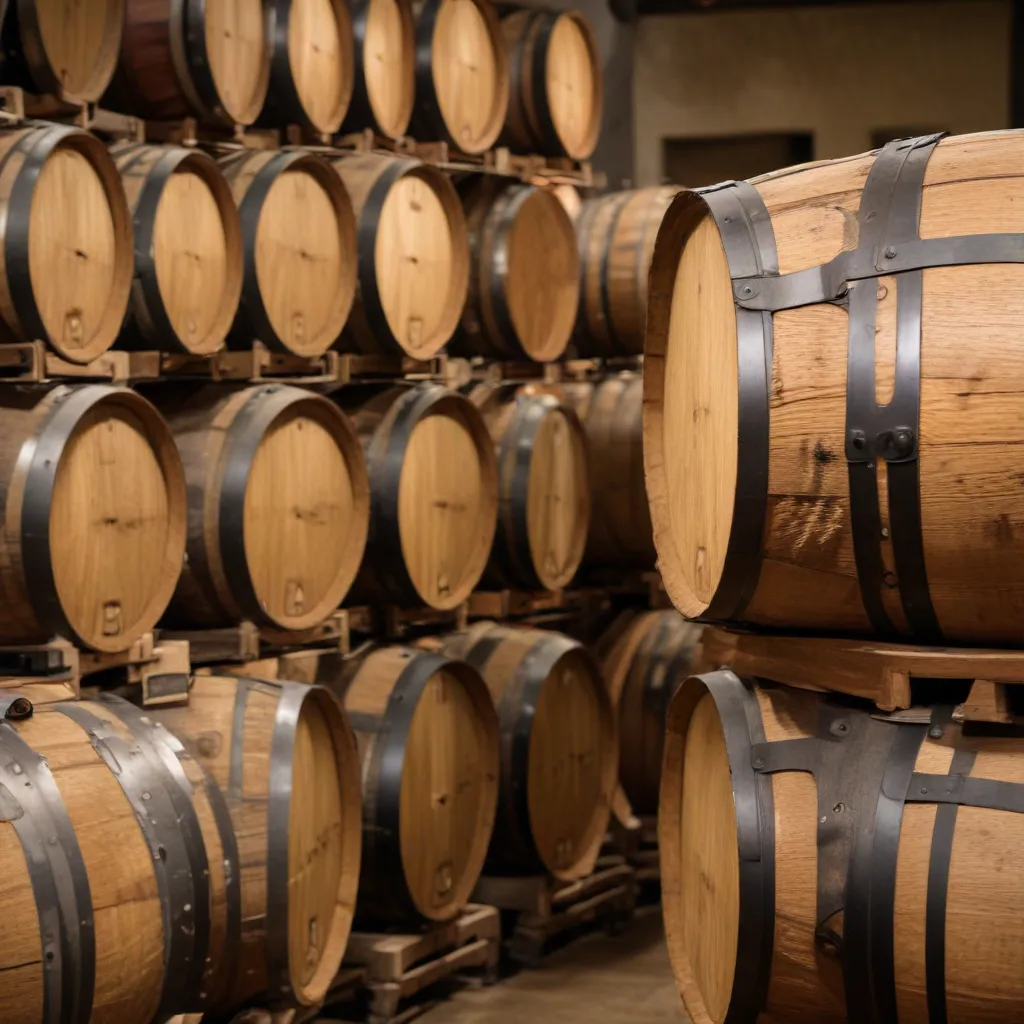
The art of oak aging is a time-honored tradition in the world of winemaking, where the interplay between wood and wine creates a captivating symphony of flavors and textures. At the Wine Garden Inn, we understand the profound impact that oak barrels have on the final character of our wines, and we meticulously curate this process to ensure our guests experience the finest expressions of our terroir.
Oak Aging Fundamentals
The Oak Aging Process
Barrel aging is more than just a step in the winemaking process; it’s a transformative journey that significantly shapes the final flavor profile of the wine. As wine matures in wooden barrels, it undergoes a series of chemical and physical changes that result in increased complexity, enhanced mouthfeel, and the development of distinctive aromas and flavors.
Oak Barrel Characteristics
The choice of oak in winemaking is a deliberate decision, driven by an understanding of the unique properties that each type of oak offers. From the robust American oak to the more subtle French oak, and the delicate notes of acacia or chestnut, each wood variety imparts its own set of characteristics to the aging wine. The region where the oak is grown also plays a crucial role, with forests like Allier and Tronçais in France offering distinct flavor profiles.
Oak Seasoning and Toasting
The seasoning and toasting of oak barrels are crucial steps in the oak aging process. Seasoning, where the oak staves are left to weather and dry for several years, helps to remove any harsh tannins and allows the wood to develop a more nuanced character. Toasting, the process of charring the interior of the barrel, further influences the flavor profile, ranging from subtle vanilla notes with light toasting to bold, smoky characteristics with heavy toasting.
Flavor Profiles in Oak-Aged Beverages
Vanillin and Caramelized Sugars
One of the most renowned contributions of oak aging is the development of vanilla and caramel-like flavors. As the wine interacts with the oak, the lignin and cellulose in the wood break down, releasing vanillin, a compound that imparts a rich, almost creamy, vanilla essence. Additionally, the toasting process caramelizes the sugars in the wood, adding a layer of sweetness and complexity to the wine.
Lactones and Coconut Notes
Another notable oak-derived flavor is the presence of lactones, which lend a distinct coconut or sweet, woody aroma to the wine. These compounds are naturally present in oak and are further enhanced during the aging process, creating a unique and captivating sensory experience.
Tannins and Mouthfeel
The interaction between the wine and the oak barrels also contributes to the wine’s overall mouthfeel and structure. The tannins extracted from the wood integrate with the tannins present in the grapes, creating a harmonious balance that can add a velvety, silky texture to the wine. This enhanced mouthfeel is a hallmark of many oak-aged wines, providing a pleasurable and lasting impression on the palate.
Factors Influencing Oak Aging
Oak Species and Origin
The choice of oak species and the region where the wood is sourced have a profound influence on the final character of the wine. American oak, with its bold and assertive flavors, is often favored for wines that benefit from a stronger oak presence, while French oak, with its more subtle and elegant profile, is commonly used to enhance the finesse and complexity of the wine.
Barrel Size and Toast Level
The size of the oak barrel and the level of toast also play a significant role in the oak aging process. Smaller barrels, due to their increased surface-to-volume ratio, tend to impart a more intense oak influence, while larger barrels offer a more gentle and gradual integration of oak characteristics. The toast level, ranging from light to heavy, can accentuate specific flavor notes, from delicate vanilla to robust, smoky nuances.
Maturation Time and Temperature
The duration of oak aging and the temperature at which the wine matures are crucial factors in the development of the final flavor profile. Longer aging periods allow for a deeper and more complex integration of the oak-derived characteristics, while optimal temperature conditions ensure a harmonious evolution of the wine’s aromas and textures.
Applying Oak Aging Techniques
Fermentation and Barrel Aging
At the Wine Garden Inn, we utilize a combination of fermentation and barrel aging techniques to craft our exceptional wines. By fermenting certain varietals directly in oak barrels, we can achieve a more seamless integration of the wood’s influence, resulting in a wine that showcases a beautiful balance between the fruit’s natural expression and the nuanced flavors imparted by the oak.
Blending and Finishing Touches
In addition to primary barrel aging, we employ a variety of blending and finishing techniques to further enhance the character of our wines. This may involve the strategic use of oak staves or chips, as well as the careful selection and integration of wines aged in different barrel types or toast levels. These finishing touches allow us to fine-tune the final profile, ensuring that each bottle of Wine Garden Inn wine is a masterful representation of our dedication to quality and innovation.
Monitoring and Adjusting
Throughout the oak aging process, our winemaking team closely monitors the evolution of our wines, making adjustments as necessary to maintain the perfect balance between the grape’s inherent qualities and the oak’s influence. This meticulous attention to detail ensures that our guests experience the very best that our terroir has to offer, with each sip revealing the artistry and craftsmanship that goes into every bottle.
The art of oak aging is a captivating and ever-evolving aspect of winemaking, where tradition meets innovation. At the Wine Garden Inn, we are committed to mastering this craft, continuously exploring new techniques and pushing the boundaries of what’s possible in the world of oak-aged beverages. Join us on this journey as we unveil the secrets of the barrel, one sip at a time.
